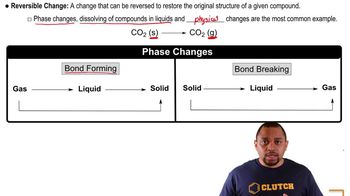Here are the essential concepts you must grasp in order to answer the question correctly.
Equilibrium Constants
Equilibrium constants, denoted as Kc for concentrations and Kp for partial pressures, quantify the ratio of products to reactants at equilibrium. Kc is used when dealing with molar concentrations, while Kp is applicable for gases and is expressed in terms of their partial pressures. The relationship between Kc and Kp is crucial for converting between these two forms, especially when dealing with gaseous reactions.
Recommended video:
Relationship Between Kc and Kp
The relationship between Kc and Kp is given by the equation Kp = Kc(RT)^(Δn), where R is the ideal gas constant, T is the temperature in Kelvin, and Δn is the change in moles of gas (moles of products minus moles of reactants). This equation allows for the conversion of Kc to Kp and vice versa, depending on the conditions of the reaction. Understanding this relationship is essential for solving equilibrium problems involving gases.
Recommended video:
Change in Moles of Gas (Δn)
Δn represents the difference in the number of moles of gaseous products and reactants in a chemical reaction. It is calculated by subtracting the total moles of reactants from the total moles of products. This value is critical in the Kp and Kc relationship, as it influences the conversion factor (RT)^(Δn) when calculating the equilibrium constant for a reaction involving gases.
Recommended video:
Reversible Changes in Matter

 Verified step by step guidance
Verified step by step guidance


